Views: 78 Author: Tuohai Pump Publish Time: 2023-12-03 Origin: www.txtuohai.com








In our daily lives, various types of water pumps provide significant convenience. Besides the common dry pumps, submersible pumps that operate underwater also play an essential role. Let's dive into some key information about submersible pumps and their applications.
Theoretically, any pump that can be fully submerged in water and operate normally is called a submersible pump. These pumps are completely sealed, including the motor and all other components housed within the pump body. They start and run without the need for an intake pipe or additional cooling system. Compared to dry pumps, submersible pumps have significant advantages in terms of construction cost and time. Most submersible pumps are powered by electric motors, though sometimes hydraulic drives are used. This article focuses exclusively on electrically driven submersible pumps.
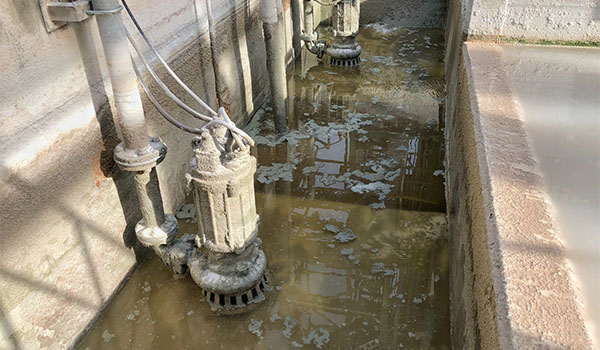
Submersible pumps can be categorized into three main types based on their working principles: centrifugal type, axial-flow type, and mixed-flow type. All of these are operated by using the rotation of impellers to move liquid and achieve lifting effects. Let's briefly discuss the differences between these three types of submersible pumps.
Centrifugal-type submersible pumps create the centrifugal force by spinning their impellers, flinging the liquid outward and upward. They are known for achieving high head (lifting height). Some models use a multi-stage impeller design, suitable for higher-head applications. Common types include submersible sewage pumps, sump pumps, and deep well pumps.

The axial-flow submersible pump, typically a submersible axial flow pump, is a compact design compared to centrifugal types. Its impeller resembles a propeller, pushing the water along the axis as it rotates. With a simpler internal structure and less resistance to axial water flow, these pumps offer high flow rates but lower heads, ideal for applications needing high volume without demanding a high head.

Mixed-flow submersible pumps combine the advantages of both axial and centrifugal designs. With specially designed impellers, they facilitate both axial and radial water flow within the pump. This design provides a good balance of high flow rate and higher head than axial-flow pumps, suitable for applications requiring moderate flow and head.
Submersible pumps can also be categorized based on their application, like sewage submersible pumps, clean water submersible pumps, and drainage submersible pumps, among others. Each classification has its specifics, which I won't detail here. If you have more questions, feel free to contact us for answers to all your inquiries.
Most of the submersible pumps are developed and improved from dry-type pumps, they offer many advantages that dry pumps can't match.
Easy Installation: The installation of submersible pumps is straightforward. They can be installed in the wellbore, float, coupling, or even fixed underwater directly, eliminating the need for a dedicated pump house and complex intake pipelines and valve systems, making the process extremely convenient.

Space and Cost Efficiency: Submersible pumps work underwater, removing the need for surface pump houses. This not only saves ground space and construction costs but also significantly shortens the construction period, enhancing efficiency.
Low Operational Noise: Submersible pumps are fully sealed. Some of the noise generated during operation is isolated within the pump body. Moreover, as they work entirely underwater, most noise and vibration are muffled by the water, making submersible pumps much quieter than dry pumps.
No Cavitation Issues: Submersible pumps operate fully underwater, ensuring positive pressure at the suction inlet and reducing the likelihood of low-pressure zones, thereby lowering the risk of cavitation. Also, due to their unique design and operating method, the need for a water intake process is eliminated during start-up, reducing the risk of air entering the pump and further decreasing the risk of cavitation.
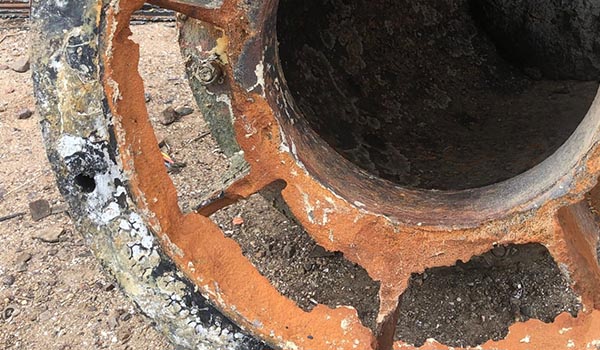
Reliable and Safe Operation: The integration of the motor and impeller inside the pump body eliminates the need for long shafts or other drive connections, effectively improving reliability and safety during operation.
High Efficiency and Energy Saving: Submersible pumps operate directly in water, with the motor and impeller integrated within the pump body, minimizing energy loss and thus enhancing work efficiency and energy savings.
Wide Applicability: Submersible pumps can be paired with various equipment and have multiple installation methods, suitable for different environments. They are applicable in various scenarios, including municipal engineering, flood control and drainage, sewage treatment, aquaculture, water recreation facilities, etc., meeting diverse needs.
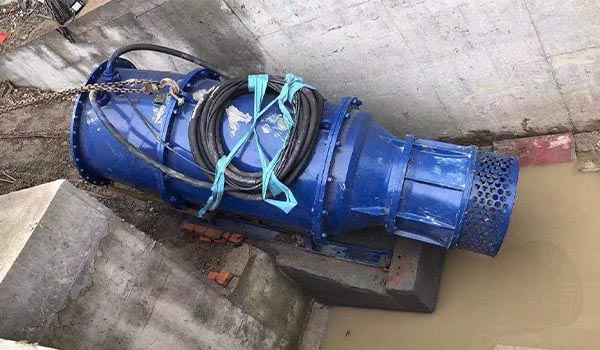
These advantages make submersible pumps an ideal choice for various water treatment and conveyance projects, not only benefiting the reduction of initial investment but also contributing to long-term operational efficiency and cost control.
The main components of the submersible pump include the pump casing, impeller, shaft, mechanical seal, etc., which can be made from different materials depending on the environment they are used in.
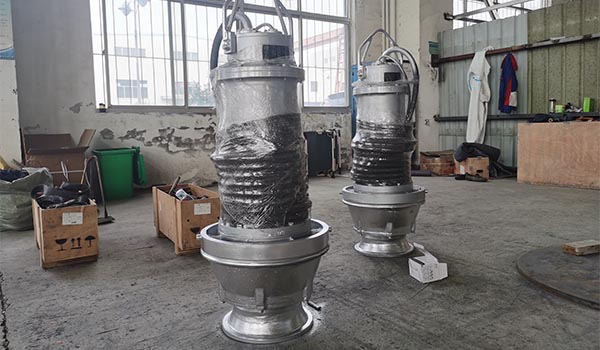
The pump casing can be made from stainless steel, cast iron, or cast steel. Stainless steel is suitable for various corrosive environments, while cast iron casings can be enhanced for corrosion resistance through methods like rust-proof painting, galvanizing, or zinc anode oxidation.
Impellers are available in stainless steel, cast iron, and bronze. Stainless steel and bronze are more appropriate for use in seawater or other corrosive environments.
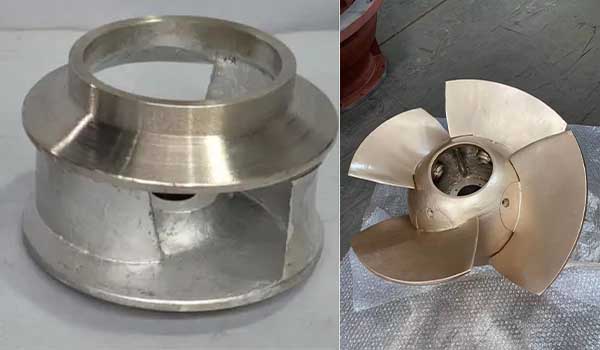
The shaft is generally made of stainless steel, which is harder compared to other materials and offers a longer lifespan.
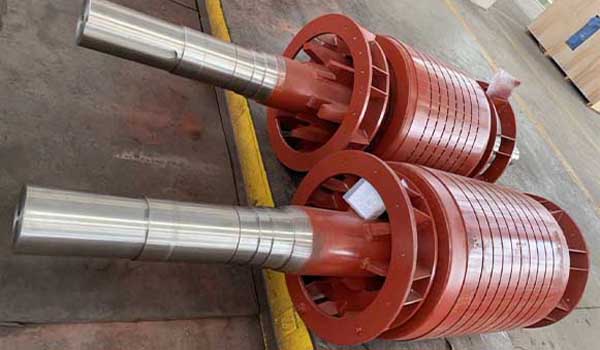
The mechanical seal is typically made of silicon carbide.
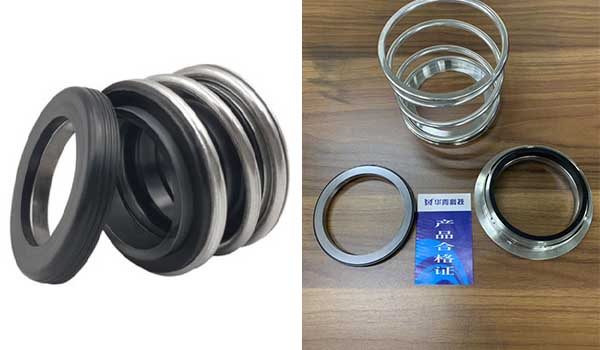
Apart from these common materials, submersible pumps can also be made from other materials depending on their specific applications. If you would like to know more, feel free to contact us, and we will provide you with more detailed information.
Urban Drainage and Sewage Treatment: In urban sewage treatment (Such as the sewage treatment plant or sewage lifting pump station), centrifugal submersible pumps are often used to lift sewage, aiding in its treatment and recycling. In drainage systems, submersible pumps are used to promptly remove rainwater, preventing urban flooding.
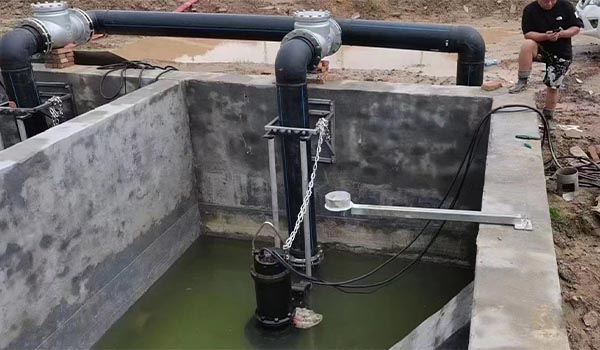
Agriculture Irrigation and Aquaculture: Submersible pumps are widely used in agricultural irrigation, drawing water from underground or surface sources to water crops. In fisheries and aquaculture farms, they are also used for water circulation and aeration, maintaining suitable water quality conditions.
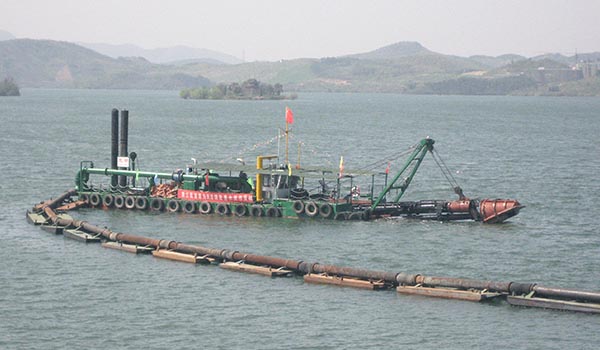
Industrial Applications: In various industrial settings, like chemical plants, mines, and steel mills, submersible pumps are utilized for transferring different types of groundwater, cooling water, and treating wastewater.
Construction and Building: They are used for draining areas like building basements, tunnels, and pits to ensure these areas remain dry and safe, preventing water disasters from damaging the structures.
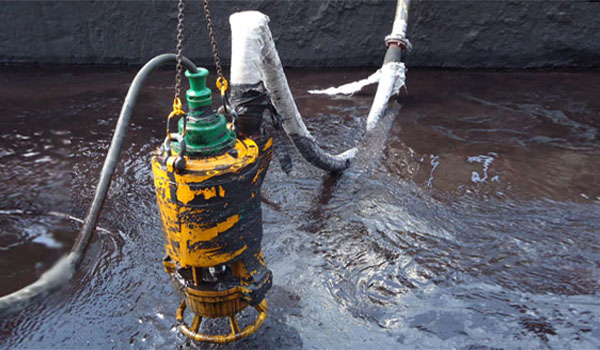
Flood Control and Drainage: During floods or other water-related disasters, high-volume axial-flow submersible pumps can quickly remove floodwaters, protecting lives and property, such as the rainwater pumping station, etc.
Water Recreation Facilities: In features like fountains and swimming pools, submersible pumps circulate water, maintaining cleanliness and aesthetic appeal.
Submersible pumps play a crucial role in various applications, whether it's maintaining environmental safety, supporting production activities, or enhancing the quality of life.
When selecting a submersible pump for a project, several factors need to be considered, and the selection process can follow these steps:
First, observe the characteristics of the water, such as whether it is clean, corrosive, or contains impurities. Depending on the type of impurities in the water (like hard stones or domestic waste such as plastics, cloth fibers, etc.), decide whether to use a trash rack or a grinder to prevent damage to the pump from these materials.

Second, determine the required flow rate and head, which are the basic parameters for choosing a submersible pump. Based on these parameters, you can preliminarily decide whether to choose an axial-flow submersible pump or a centrifugal submersible pump.
After confirming the required flow rate and head, decide on the installation method based on the pump's location. For example, submersible axial-flow pumps can be installed using well-tube, horizontal, floating methods, etc., while centrifugal submersible pumps can be coupled or horizontally installed. Different installation methods require corresponding accessories, so detailed communication with the manufacturer is necessary when purchasing.
Finally, consider whether the pump's start and stop operations need to be automated. For instance, in a rainwater pumping station, you might need the pump to automatically start when the water level rises to a preset value for drainage. In this case, choose a submersible pump with automatic start-stop functionality, usually equipped with float switches or ultrasonic level switches.
Choosing a submersible pump is a multifaceted process that requires ensuring the selected pump meets the project's needs to the fullest. If you have other questions about choosing submersible pumps, feel free to contact us. TUOHAI's professional engineers can provide the best solutions for your project and adapt to potential future changes.
With their unique design and diverse applications, submersible pumps have become an indispensable part of modern water treatment and water resource management. Whether in urban infrastructure, agricultural irrigation, industrial applications, or water recreation facilities, submersible pumps play a vital role.
Is it safe for submersible pumps to operate without water?
Submersible pumps are designed to operate underwater, relying on the surrounding water for cooling. If they run above water, they might overheat and get damaged due to the lack of cooling.
However, in certain special cases, they can be made to operate above water by adding an external cooling system to the submersible pump. But, this approach goes against the original design concept of submersible pumps.
Do submersible pumps have to be fully submerged?
Every submersible pump has a minimum water level line, indicating the safe operating water height, usually above the pump's motor section. Theoretically, submersible pumps don't need to be fully submerged to operate. However, from a practical standpoint, we still recommend fully submerging the pump for the safest operation. While the minimum water level line provides a safety limit, even a slight drop in water level could cause the pump to overheat or even burn out. Therefore, although it's technically possible for submersible pumps to operate above the minimum water level line, for the safety and long-term durability of the equipment, it's advised to keep the pump fully submerged.
What is the lifespan of a submersible pump?
The lifespan of a submersible pump is influenced by several factors, including the corrosiveness of the water, the amount of impurities in the water, the frequency of regular maintenance, and whether the pump is removed and stored dry during prolonged periods of inactivity. Under ideal conditions, such as in a freshwater environment with proper care and maintenance, a submersible pump can operate well for over 10 years. Therefore, the service life of a submersible pump largely depends on how it is operated and maintained.
How often should the submersible pumps be serviced and maintained?
The frequency of maintenance and care for a submersible pump is indeed closely related to its operating environment. Pumps operating in sewage or high-impurity environments typically require more frequent maintenance than those used in clean freshwater settings. Additionally, pumps that are used more frequently also need more regular upkeep.
It's generally recommended to perform maintenance every six months or annually. Key inspection items include checking the motor's insulation resistance, inspecting for any damage to the cable, assessing the wear of the impeller, and the condition of the oil and mechanical seal. When not in use for extended periods, it's advisable not to leave the pump submerged in water; instead, remove it and store it in a dry environment. If a spare pump is available, it should be rotated regularly to prevent rusting, corrosion, and dampness. Such maintenance practices not only extend the life of the submersible pump but also ensure its reliability and efficiency when it matters most.
Is the submersible pump suitable for home use?
Not all submersible pumps are suitable for home use. Some small submersible sewage pumps, sump pumps, and well pumps are ideal for household settings and can be used for a variety of applications such as in sewers, toilets, septic tanks, or for extracting groundwater. These submersible pumps meet specific water treatment needs in homes, offering strong applicability, easy installation, and simple maintenance. They are an ideal choice for handling water resource issues in domestic environments.
What is the difference between a normal pump and a submersible pump?
The main difference between submersible pumps and regular water pumps is that submersible pumps can operate underwater, while regular water pumps cannot. Additionally, there are significant differences in sealing and cooling methods between the two. Submersible pumps must have efficient sealing capabilities since they are fully immersed in water, and their cooling depends on the surrounding water. In contrast, regular water pumps typically use air for cooling and do not require the same level of strict sealing as submersible pumps. These differences make submersible pumps and regular water pumps suitable for different environments and needs.
